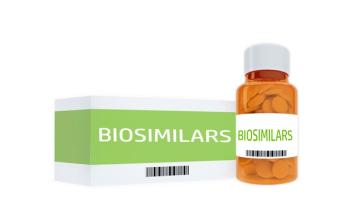Key Takeaways
- Pharma and biotech underperformed broader markets in early 2025, with pharma equity issuance and biotech IPO activity falling sharply, signaling tighter funding conditions and valuation pressures.
- M&A activity slowed significantly in both sectors compared to 2024, with fewer but higher-value pharma deals and a steep drop in biotech deal volume due to market uncertainty, funding cuts, and valuation gaps.
- Strategic focus remains on targeted acquisitions and partnerships, with pharma leveraging biotech’s lower valuations to expand pipelines, while many biotechs face survival challenges amid limited financing and a weak IPO market.
Although the pace of innovation has been strong for both pharmaceutical and biotechnology companies and the rate of US and European drug approvals continues to be solid, the financing, M&A, and stock market developments in the first half of 2025 for the pharma and biotech sectors have broken from past trends in certain categories—both positively and negatively. Many of these trends would seem not to make sense on the surface, but they are logical if you carefully examine the underlying drivers.
In this article, we will look at the major stock market, financing, and M&A trends for pharma and biotech in the first half of 2025, the outlook going forward, and the implications for industry executives.
There are also major strategic issues that will impact the future, such as the unusually large volume of patent expirations facing pharma companies, the trajectory and nature of the Trump administration actions, and the emergence of Chinese companies and research organizations as a source of innovative drugs and treatments, especially in cancer research.
Pharma stock market and financing
By the end of the first half of 2025, the S&P 500 had increased by 5.5% and the S&P Euro 350 rose by 21%. This was a significant change, with much of the volatility in the S&P 500 driven by economic and US tariff uncertainties.
The pharma industry underperformed in the first half of 2025.
The Young & Partners (Y&P) US BioPharma index increased by only 0.05%, the Y&P European BioPharma index grew by just 1.4%, and the Y&P Generic Pharma index dropped by 19.1%.
Dollar volume of equity issuance through the first six months of 2025 was $9.2 billion versus $13.3 billion during the same period in 2024, an increase on an annualized basis.
The number of offerings in the pharma space was dramatically lower, however, with only 28 offerings in the first half of 2025 versus 69 the previous-year period.
Biotech stock market and financing
The performance of biotech industry stock market indices was mixed in 1H2025. The broader NBI index decreased by 2.6% and the Y&P Biotech Mid-Small Cap index rose by 22.7%.
Biotech equity offerings pulled back in the first half of 2025, with only 80 such instances completed versus 371 during the same period last year. The dollar volume also declined, with $10.7 billion completed in the first half of 2025 versus $38.1 billion in 2024.
The IPO market volume softened further. Only eight IPOs were completed in the first six months of this year, worth $1.3 billion, compared to 23 IPOs, worth $3.8 billion, in all of 2024.
Many biotechs with plans to go public have been facing serious funding problems, as the IPO market has been an important source of very attractive equity funds to extend these companies’ research and regulatory runways.
The drop in biotech stock market valuations has also pushed down the private equity funding valuations and availability. Venture capital (VC) firms have taken big paper losses on their existing ownership positions in private and public biotech/biopharma companies and dramatically slowed funding new companies, except in the hot areas of technology.
Their focus has been on defending their existing portfolio companies to make sure they survive the funding and IPO drought. However, there are signs that investing activity is picking up as VCs take advantage of lower valuations and because they really cannot stop investing entirely.
With many of the private biotechs running out of money, we will continue to see downsizing announcements on a regular basis. Some biotech companies will not survive and will have to shut down. This down cycle has impacted the biotech sector many times historically, so this is not a new development for the industry.
Pharma M&A in 1H2025 and the outlook
Acquisitions by pharma companies have traditionally been a regular part of the landscape. Although Big Pharma organizations have revived their ability to invent new drugs, they still need to supplement their own efforts with acquisitions of and collaborations with pharma and biotech companies. With many pharma manufacturers facing patent cliffs on their major products, the need to acquire drugs and drug candidates continues to be high.
However, only four deals, worth $16.2 billion, were completed in the first half of 2025 versus 32 deals completed, worth $19.2 billion, for all last year. This represents a massive decrease in the number of deals and an increase in the dollar volume of M&A agreements in the pharma space. Johnson & Johnson’s $14 billion acquisition of Intra-Cellular Therapeutics, which closed in April, drove the dollar volume up in the first half.
Why have the number of pharma acquisitions declined? Pharma companies in general, with some exceptions, are focusing on strategic small-to-medium-sized acquisitions.
They are also focused on biotech companies via acquisitions, strategic partnerships, and in-licensing to achieve pipeline growth. Biotech M&A volume is not reflected in the numbers mentioned.
As of June 30, 2025, the dollar value and number of deals announced but not closed was low at $15.6 billion (16 deals).
Looking into the future, there may be one or two larger deals, but those deals will not be the strategic focus of the pharma organizations. Pharma M&A will continue to be moderately active in terms of the number of deals, with a focus on small-to-medium-sized transactions but modest dollar volumes.
Deals with a strong strategic rationale or a theme around adding new and growing technologies and products will continue to be pursued. Although the Trump administration is threatening to change drug pricing and impose large tariffs on imports of pharmaceuticals, there is still, as of this writing, much uncertainty about what will actually be implemented that dealmakers have not adjusted their approach to the market yet.
Biotech M&A in 1H2025 and the outlook
In the first half of 2025, 12 biotech deals, worth $12.6 billion, were completed versus 73 deals, worth $109 billion, finalized in all of 2024. On an annualized basis, this represents a major decline in both the total dollar volume and the number of deals completed. Transactions in the US dominated relative to the rest of the world.
Biotech M&A dollar volume and number of deals totaled a record high in 2024, driven by the combination of the ongoing strategic acquisition interests of large pharma and the plunge in biotech IPOs that reduced the options for private biotechs.
The drop in the first half of this year is a reflection of the flurry of uncertainties that have hit the biotech and pharma sectors.
The dollar value of the pipeline of biotech deals announced but not closed as of June 30, 2025, was in line with the first-half trends, at $15.1 billion (26 deals).
What is driving this trend? The surge in activity in 2024 was sparked by pharma companies aggressively looking to build their pipelines and revenues. This was aided by the collapse of the IPO market, the severe reduction in equity funding, and a dramatic drop in the share prices of biotechs, which resulted in these companies being more willing to consider a sale of their organization. There are also a number of specific therapies and markets that are a high priority for the strategic buyers.
The slowdown in the first half of this year has been driven by the dramatic increase in uncertainty in the US due to the major federal funding overhauls at the NIH and university research centers and the severe cutbacks at the FDA.
What is the outlook for biotech M&A? We expect more of the same in the future, driven by the same factors, with a moderate number and dollar volume of biotech deals being completed over the next couple of years, along with partnering, licensing, and royalty monetization for funding and for shareholder liquidity.
Approaches by senior management
Pharma will be heavily focused on M&A where there is a compelling strategic rationale and where the same results cannot be obtained internally or through licensing and strategic partnerships. However, it will continue to be challenging to determine what the right valuations are for each deal. The use of earn-outs and contingent payment structures remains a third or more of the market, which reflects the challenge of bridging buyer and seller valuation expectations.
Private biotechs with assets that appeal to pharma should consider selling now, given the moribund IPO market, steady M&A valuations, and the high demand for deals in attractive segments.
What does it all mean?
The big unknown for the future is the impact that the ongoing Trump administration actions will have on healthcare regulation, drug prices, etc. However, predicting what will actually happen is very difficult at this stage.
Barring major disruptions, pharma companies will continue to enjoy relatively attractive stock market valuations and access to the financing markets, which will continue to be a stabilizing force on the industry. Although biotech stock market valuations are down and are taking some time to recover, existing public biotech companies are able to sell equity, and there are small signs that the IPO market for biotech companies will begin a slow recovery.
This overall picture is positive for the pharma companies because there is a large supply of biotech companies available for M&A transactions, licensing, and strategic partnerships at valuations that are lower than two years ago.
For biotechs, the key will be the quality and the maturity of their drug candidate pipeline and their cash needs. If a biotech company is in a therapeutic area that is the subject of high strategic interest and/or they are at a viable financing point, the outlook will be positive. The rest will have to forge a path that is sized properly relative to how long of a runway the organization will need to reach a viable financing or M&A point.
For many biotechs, it will be a matter of survival versus success.
Peter Young is CEO and president of Young & Partners, and a member of Pharm Exec’s Editorial Advisory Board. He can be reached at pyoung@youngandpartners.com





